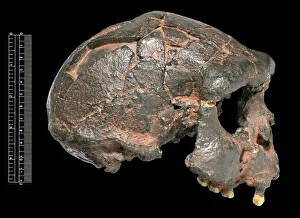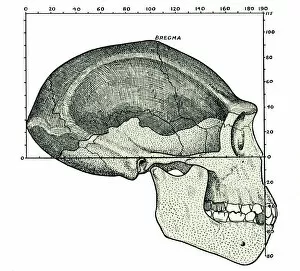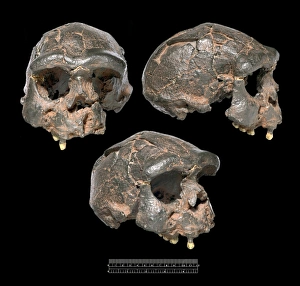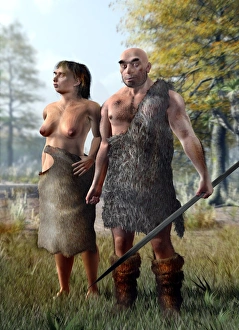Java Man Collection
"Unveiling the Enigmatic Java Man: A Glimpse into Our Ancient Ancestors" Step back in time and explore the fascinating world of Homo erectus
All Professionally Made to Order for Quick Shipping
"Unveiling the Enigmatic Java Man: A Glimpse into Our Ancient Ancestors" Step back in time and explore the fascinating world of Homo erectus, as we delve into the captivating story of Java Man. This extraordinary creature, also known as Pithecanthropus erectus, holds a significant place in our evolutionary history. The journey begins with the iconic Java Man cranium (Sangiran 17) cast, a remarkable replica that allows us to study this ancient hominin's skull structure. The Homo erectus skull reveals intriguing details about their physical characteristics and provides valuable insights into their cognitive abilities. Immerse yourself in an awe-inspiring reconstruction through a vivid color lithograph. Witness how science breathes life into these long-extinct beings, giving us a glimpse of what they might have looked like thousands of years ago. But it doesn't stop there – let's examine another crucial aspect: the jaw and teeth of Java Man. These remnants offer clues about their diet and lifestyle, painting a vivid picture of survival strategies employed by our early ancestors. Marvel at yet another astonishing cast – the Homo erectus Sangiran 17 cranium – which further deepens our understanding of this enigmatic species. By studying its intricate features, scientists continue to unravel mysteries surrounding human evolution. As we explore more artwork depicting Homo erectus alongside Neanderthals, we witness humanity's shared heritage across different regions and eras. These artistic representations serve as powerful reminders that we are all connected through our ancestral lineage. Finally, gaze upon the rare artifact - Trinil 2 C016 / 5097 - an authentic Homo erectus skull-cap discovered at Trinil site in Indonesia. Holding such tangible evidence from millions of years ago is truly humbling; it reminds us how far we've come on this incredible journey called life. Java Man remains an integral part of our evolutionary story, offering a window into our ancient past.













